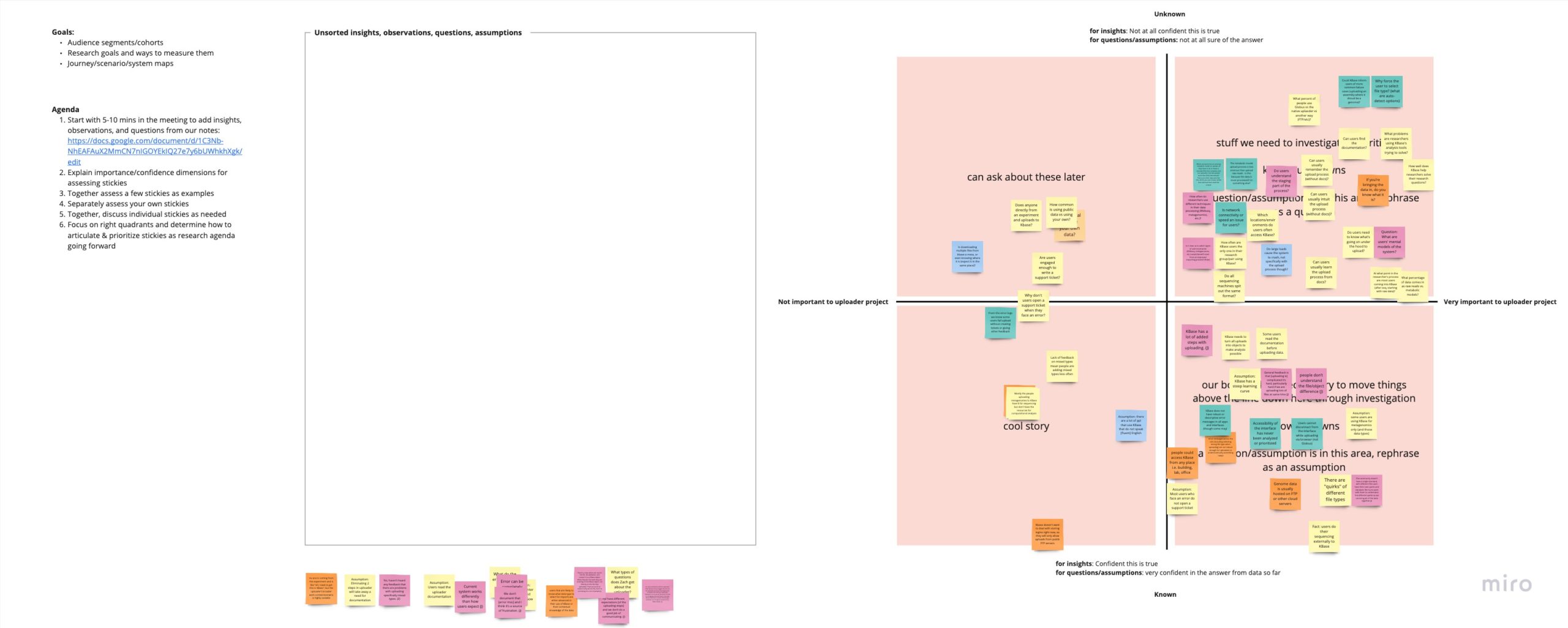CLIENT
LBNL KBase
MY ROLE
Design Lead
OVERVIEW
Developed for bench biologists and bioinformaticians, The Department of Energy Systems Biology Knowledgebase (KBase) is a software and data science platform designed to meet the grand challenge of systems biology: predicting and designing biological function.
PROBLEM STATEMENT
We kicked off our engagement with KBase with a 12 week discovery and framing project where we met with stakeholders and users to identify areas of the application that could benefit most from a follow-on delivery project. At the end of this engagement, we followed up with a 6 month delivery project that centered around uploading data to the system.
Methods
Personas
Design Studios
Contextual Inquiry
Usability Testing
Research Methodology
Discovery and Framing
Over twelve weeks, we worked closely with our stakeholders and users to identify current usability issues and opportunities for a follow-on project. Due to the technical nature of this project the entire team opted to take a short course about bioinformatics and genome sequencing in order to become more familiar with the work.
Through heuristic evaluations and interviews with users, we identified various usability issues across the application but found that one of the most confusing parts was getting data into the system. Bioinformaticians use many different file formats to get their data into the application, each with their own requirements and constraints. We found that the most common files were .fasta and .csv, so focused on those in our follow up project.
Through interviews we learned that the information architecture made it hard to find documentation and tutorial videos, and the UI for uploading data was confusing and difficult. Bioinformatics was complex work, but that didn’t mean the UX needed to be!
After our discovery and framing project, I worked with sales to identify the scope of a delivery project. I gave guidance on the shape of the team, project length, and assisted with writing the RFP and pitching to the client.

Usability Solutions
After our 12 week discovery and framing project, we worked with our stakeholders to further gain understanding of how genome sequencing in KBase worked. We further workshopped what the data upload project looked like, refining scope and identifying assumptions to be validated or disproved through research.
We found that the existing information architecture was hard to navigate, which imposed on learning how to use the data uploader's documentation and tutorial videos. We also found some usability issues that came from a confusing and complex UI. Genome sequencing was complex work, but that didn't mean the UI needed to be complicated!
We worked within the constraints of the system to iteratively improve on the user experience, which we prototype tested with our users. By breaking down each step into smaller, digestible chunks, our users could navigate the system more effectively. We also added status indicators, and offered tooltips in problem areas so that a user that hadn't found the documentation could easily upload their data. When a file errored out, we provided a clear log of the error.
